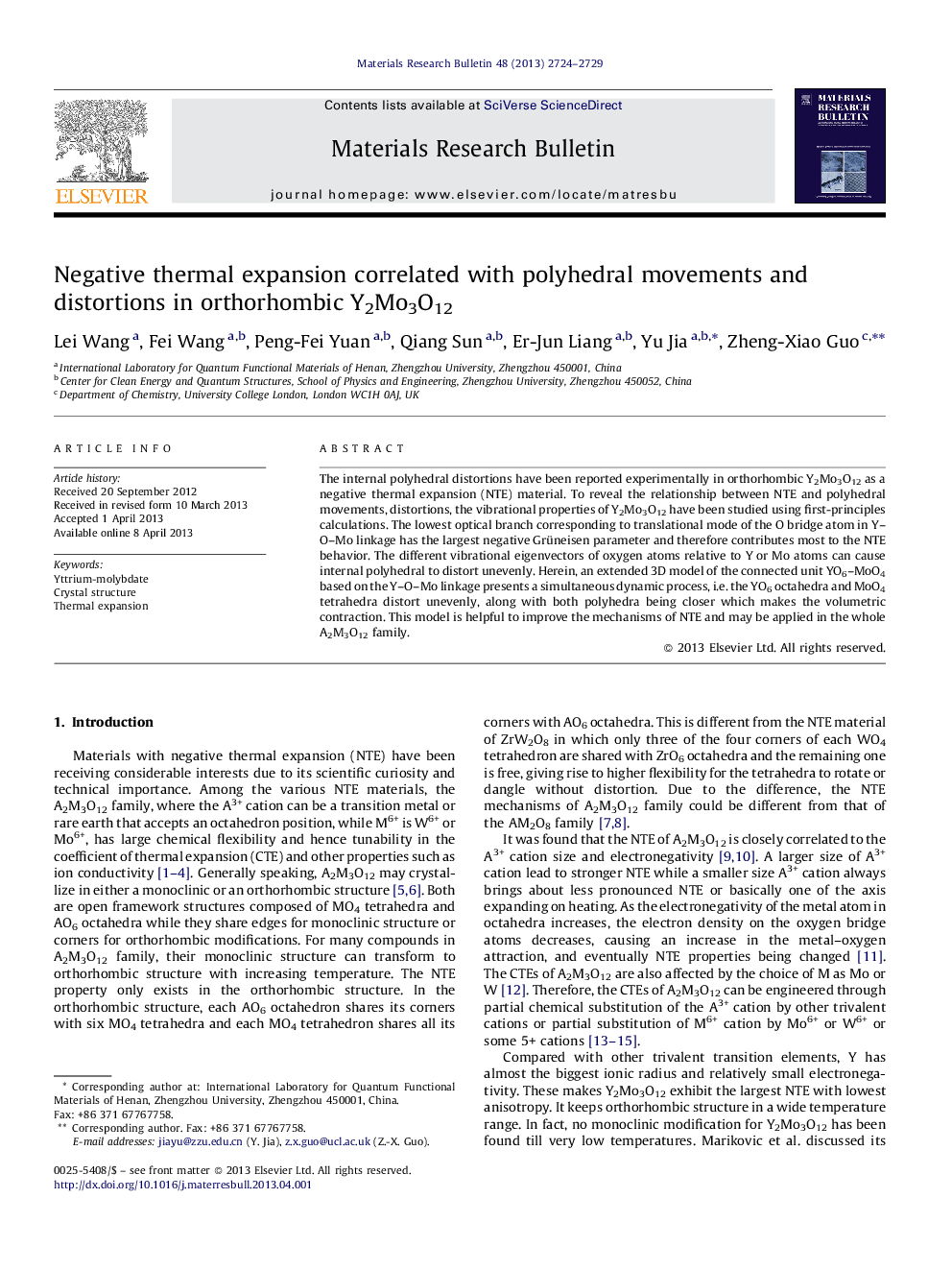| کد مقاله | کد نشریه | سال انتشار | مقاله انگلیسی | نسخه تمام متن |
|---|---|---|---|---|
| 1488798 | 992295 | 2013 | 6 صفحه PDF | دانلود رایگان |

• The NTE properties of Y2Mo3O12 are confirmed using a first-principles calculation.
• The optical branch with the lowest frequency is most responsible for the NTE.
• The relationship between NTE and polyhedral movements, distortions is elucidated.
• An extended 3D model of the connected unit YO6MoO4 is proposed.
The internal polyhedral distortions have been reported experimentally in orthorhombic Y2Mo3O12 as a negative thermal expansion (NTE) material. To reveal the relationship between NTE and polyhedral movements, distortions, the vibrational properties of Y2Mo3O12 have been studied using first-principles calculations. The lowest optical branch corresponding to translational mode of the O bridge atom in YOMo linkage has the largest negative Grüneisen parameter and therefore contributes most to the NTE behavior. The different vibrational eigenvectors of oxygen atoms relative to Y or Mo atoms can cause internal polyhedral to distort unevenly. Herein, an extended 3D model of the connected unit YO6MoO4 based on the YOMo linkage presents a simultaneous dynamic process, i.e. the YO6 octahedra and MoO4 tetrahedra distort unevenly, along with both polyhedra being closer which makes the volumetric contraction. This model is helpful to improve the mechanisms of NTE and may be applied in the whole A2M3O12 family.
Our work confirms the negative thermal expansion (NTE) behavior of the orthorhombic Y2Mo3O12 in this range 0–1000 K. The orthorhombic Y2Mo3O12 has an open framework structure where MoO4 tetrahedra and YO6 octahedra are connected by oxygen atoms. The previous mechanisms for the NTE behavior of orthorhombic Y2Mo3O12 are that the translational mode (see (b)) of the O bridge atoms in YOMo linkages will cause the linkages to be bent, reducing the space between polyhedra and making the volumetric shrinkage. Furthermore, the internal polyhedral distortions have been reported experimentally. It is necessary to reveal the relationship between NTE and polyhedral movements, distortions. From the vibrational properties, we get that the different vibrational eigenvectors of oxygen atoms relative to Y or Mo atoms can lead internal polyhedra to distort unevenly (see (c)). Herein, an extended 3D model of the connected unit YO6MoO4 based on the YOMo linkage is proposed (see (a)). It presents a simultaneous dynamic process, i.e. the YO6 octahedra and MoO4 tetrahedra distort unevenly, along with both polyhedra being closer which makes the volumetric contraction. This model is helpful to improve the mechanisms of NTE and may be applied in the whole A2M3O12 family.Figure optionsDownload as PowerPoint slide
Journal: Materials Research Bulletin - Volume 48, Issue 7, July 2013, Pages 2724–2729